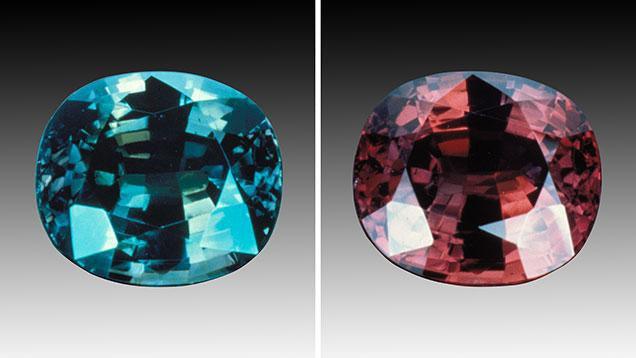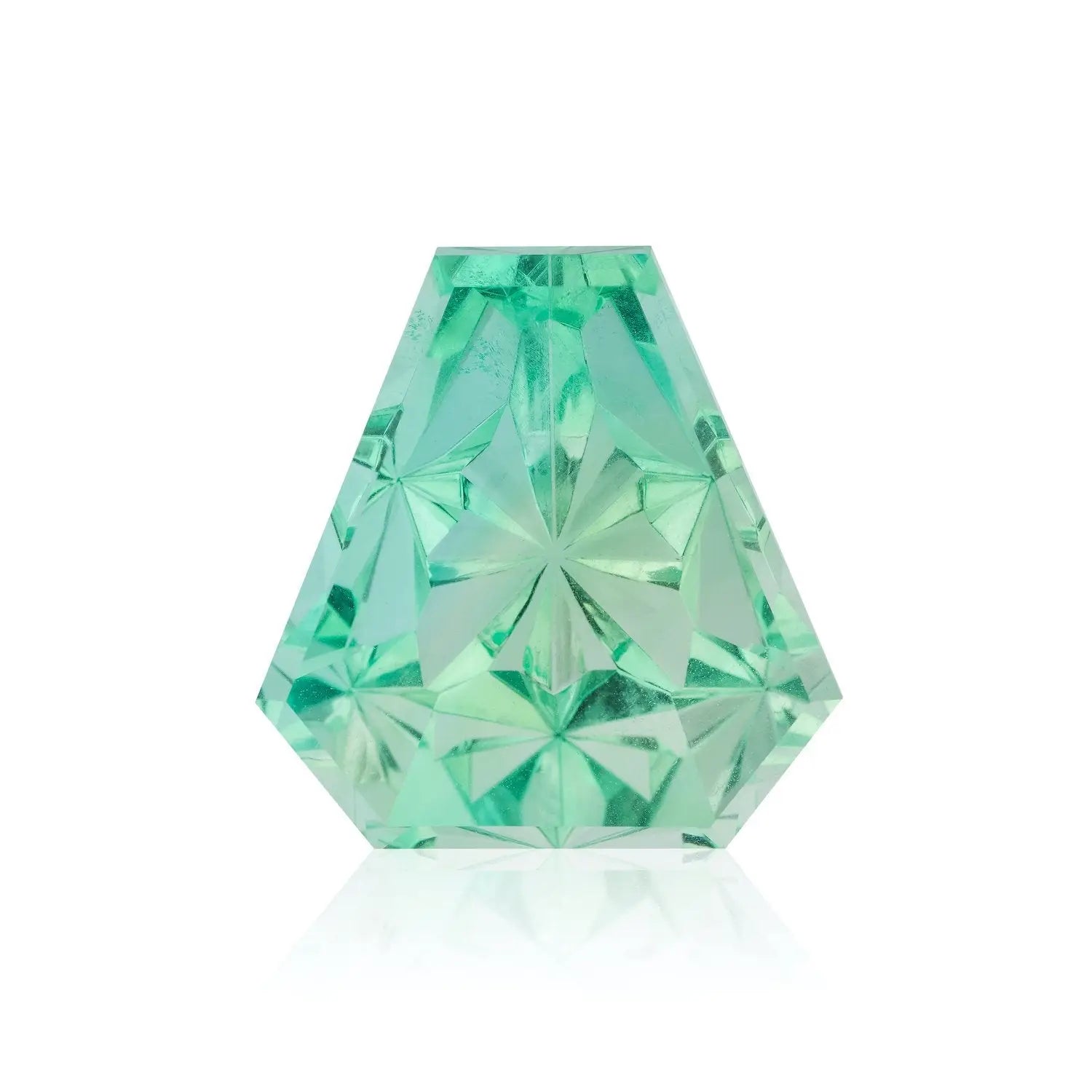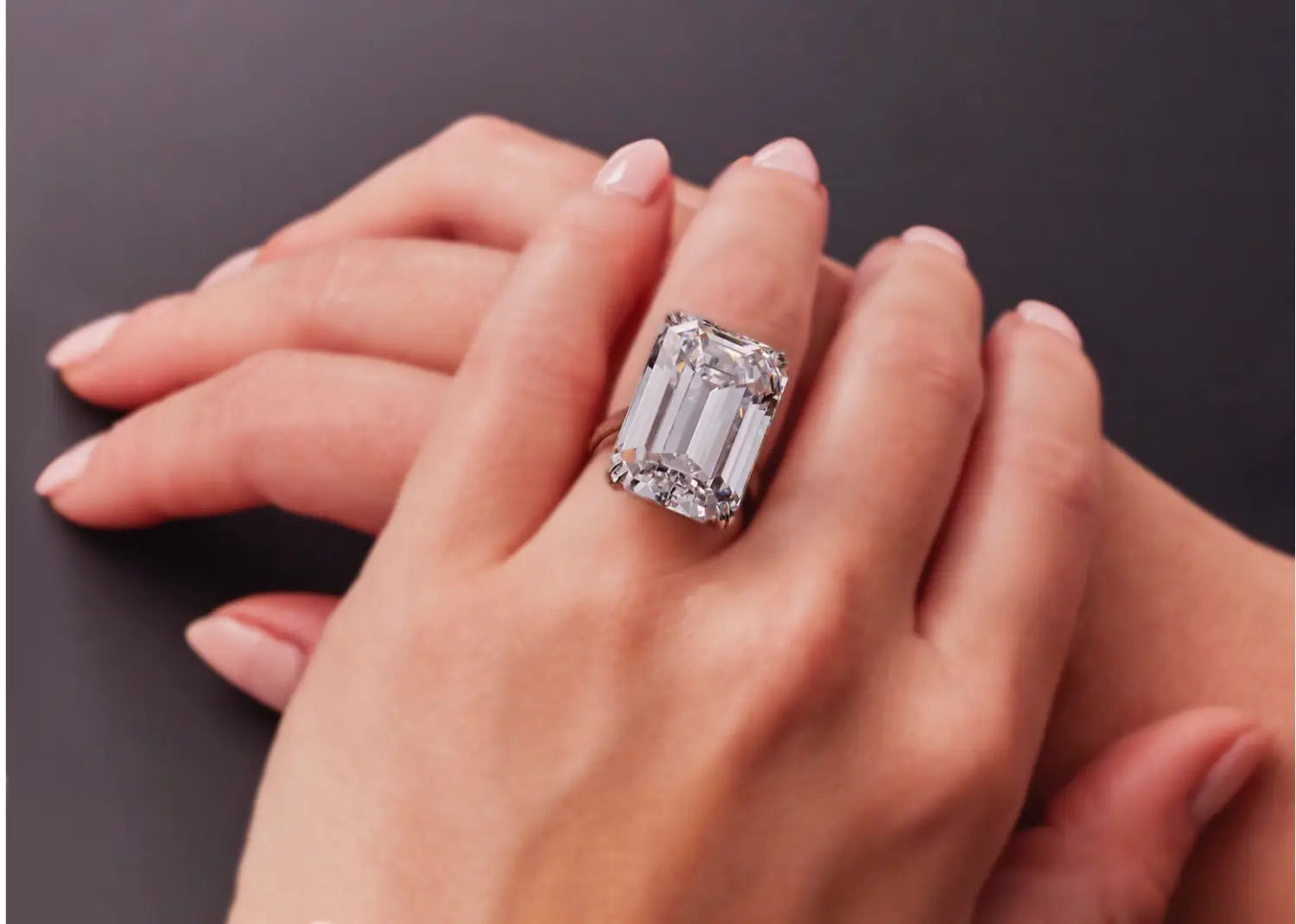
Russian Alexandrite: Meet the Gem World’s Great Chameleon
“Emerald by day, ruby by night.” That’s how gem aficionados often describe the alluring alexandrite, a rare variety of the mineral chrysoberyl that displays the phenomenon known as “color change.” Color change in alexandrite generally turns the gem from a lush green to bluish-green in daylight, to a warm red to purplish-red in incandescent light.
This magical gem was first discovered in 1830 in the emerald mines of the mineral-rich Ural Mountains of Russia. It’s been said that an early specimen of alexandrite was given to Swedish mineralogist Nils Gustaf Nordenskiöld, who first identified it as emerald. But on further inspection, Nordenskiöld noticed that the gem had a higher hardness than emerald. In fact, alexandrite falls at 8.5 on the Mohs scale of hardness compared with emerald at 7.5–8. This finding led Nordenskiöld to examine the gem further, and when he later looked at alexandrite by candlelight, Nordenskiöld was surprised to see the color of the stone had changed from green to red. He then confirmed alexandrite as a new variety of chrysoberyl.
The gem was subsequently named after the young Alexander II, the future Tsar of Russia, and soon enjoyed great popularity with the Russians. They appreciated alexandrite not only for its curious color change, but also because red and green were the colors of the tsarist army. Thus alexandrite was considered by many to be the national gem of tsarist Russia.
The Superior Color Change of Russian Alexandrite
The early alexandrite deposits found in Russia’s Ural Mountains are of the finest quality. They display vivid hues and dramatic color changes between a dark greenish-blue some describe as teal blue and raspberry red. So extraordinary are their qualities that the Russian alexandrites set the standard by which all other alexandrites are compared.
Countries such as Brazil, East Africa and Sri Lanka, for instance, can produce some fine-quality stones, but many display muddier hues and a less-precise color change than the Russian alexandrites of the 19th century.
The Magic Behind Alexandrite’s Phenomenal Tricks
So how does this phenomenal color change in alexandrite occur? By nature, alexandrite is strongly pleochroic, meaning it can show different colors when viewed from different angles. In alexandrite, the pleochroic colors are green, orange and purple-red. The trace element chromium when present at alexandrite’s formation causes these colors, the same way it makes emerald green and ruby red.
However, alexandrite’s pleochroism is not the cause of its stunning color change. In simple terms, alexandrite’s color change and especially its intensity are caused by the amount and distribution of chromium as reflected in the spectrum. The spectrum for alexandrite shows a transmission maximum at about 490 nanometers (the blue to blue-green region), an absorption maximum at 570 nanometers (the yellow region) and a second transmission maximum after about 600 nanometers in the red region and beyond in the adjacent infrared.
In contrast, there are other gemstones that can change color in response to a change in light source, but alexandrite’s transformation is so striking that the phenomenon itself is often called “the alexandrite effect.”
Alexandrite can also display another phenomenon known as the “cat’s-eye effect.” Cat’s-eye gems contain groups of needle-like inclusions, sometimes called “silk,” that lie parallel to each other. When light reflects from the inclusions, it creates a silky sheen. If the gem is fashioned as a domed cabochon, this sheen is concentrated across the dome in a thin band resembling a cat’s narrow pupil. This is known as “chatoyancy.”
Since fine-quality alexandrite has few inclusions, chatoyancy is a very rare occurrence in the gem. When it does occur, however, it’s quite spectacular seeing one gem display both phenomena simultaneously.
Russian Alexandrite Is Exceptionally Rare, Valuable
Some jewelry historians credit American mineralogist and mineral collector George F. Kunz, former Tiffany vice president and identifier of the gem kunzite, for putting alexandrite on the map. He was said to have made several trips to Russia in search of the finest stones. Since then, however, the remarkable Ural Mountain alexandrite deposits have all but been depleted.
Because of alexandrite’s rarity, various synthetics have appeared in the marketplace. Processes such as Czochralski, floating zone and flux have synthesized alexandrite. In addition, synthetic color-change corundum and synthetic color-change spinel have also been used to imitate natural alexandrite.
Today, you can find the famed Russian alexandrites at auction, in estate jewelry and in antique pieces from the Victorian era. They are an exceptionally rare and valuable member of the chrysoberyl family, especially fine-quality stones in sizes weighing a carat or more that exhibit pure hues and strong color changes. Moreover, alexandrite is an enchanting gem, with a unique power to fascinate and delight all who are lucky enough to see her at play.
While Russia is the most famous alexandrite source, this alexandrite from Brazil (pictured above) shows beautiful color change from daylight (left) to incandescent light (right). © GIA & Tino Hammid, courtesy Mayer & Watt.

